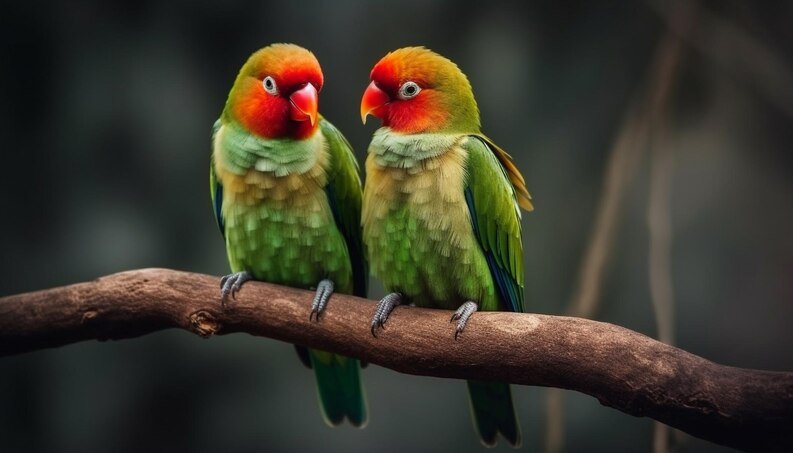Tell the difference between male and female budgies. Many people are curious as to how they can tell the gender of their budgies. One way is by doing a DNA test, but unless you’re planning on mating your budgies or need to know for medical reasons then this isn’t really an option.
If you don’t plan on breeding then it’s important that you neuter your male budgies. If you don’t, they will keep attacking and harassing their female counterparts and in the long run could lead to egg binding or other reproductive problems which can be fatal if not treated in time.
Tell the difference between male and female budgies
Males budgies will have a cere that is much more prominent than females. The female typically has a cere that is much smaller and fades in color as it extends downwards from the bill. The male’s cere may be bluish or purple, which will extend downward from the beak and at times be slightly larger than the female’s. The female’s cere is usually white, brown or tan with some rougher texture around the edge of it, though this is not always true.
So how else is there to tell the difference between male and females?
Well, usually it’s pretty obvious when you have a young budgie. When they are young you can tell by looking at the colour of their cere (the fleshy bit above their beak).
Males usually have a blue or grey cere, but females tend to have pinkish/red coloured ceres.
Another obvious way is if your budgie has little white markings on its neck just below the beak. If your budgie has some white markings on its neck then it’s a female. A male will not have any white markings at all.
Females also tend to be more round and fat compared to the males, who are usually leaner and longer shaped.
Male budgies can usually be identified by their ‘mating dance’. They may try to do this with you or even your female budgies. This includes making loud noises and wiggling their tail feathers.
Also if your male budgie has recently lost his mate, he may attempt to ‘steal’ another bird’s partner. He will sit close to the other budgies cage hoping that they will be lured over. If your budgie gets particularly aggressive towards you then it’s probably a boy!
Male budgies are also more likely to talk than females, but not all male budgies talk – I have one who doesn’t say a single word! However, males tend to learn how to whistle, sing and make specific sounds much quicker compared to females.
A female often learns these tricks once her hormonal balance changes, which can be a little later on in life.
Some budgie breeders suggest waiting till your budgie is at least one year old before teaching them tricks, because they won’t learn it as easily when they are younger.
In my personal opinion I find that there isn’t much difference between the males and females once their mature – except for the mating habits of course! Their personalities do not change much depending on their gender.
They will still enjoy flying around the room and hanging from their cage bars just as much whether they’re a boy or girl!
How do you train a budgie not to bite?
This is always difficult because if your budgie has learned to bite then it means that there are certain situations which make them feel uncomfortable. When this happens they will try to defend themselves by biting you.
This may be because you have startled them or even harmed them in some way for example, mishandling them or their cage.
How can I tell if my parakeet is strangling?
A budgie can strangle if it’s head becomes wedged between the bars of a cage or its bedding. You also have to take into consideration that a budgies air sacs expand when they are frightened, making them look larger and more intimidating.
So if your budgie is looking particularly red in the face and their eyes are bulging it may be strangling.
However this can also happen if your budgie has a respiratory infection such as aspergillosis, so you should always seek advice from a vet before trying to save them yourself.
If your male budgie is choking then the best thing to do is to try and remove him from his cage and place him on a firm surface under a bright light.
You can also try to cover his head with your hand and gently swing it back and forth to encourage him to move his neck.
This is similiar to how they would try and dislodge food from the side of their cage by rocking themselves backwards and forwards. Of course you need to be careful not to miss at the same time!
If your budgie is choking then try to take them outside of their cage. This will give them more space to flap their wings and some fresh air as well which can’t hurt! If it’s a female, you may have better luck by just holding her in your hand she’ll be less likely to.
